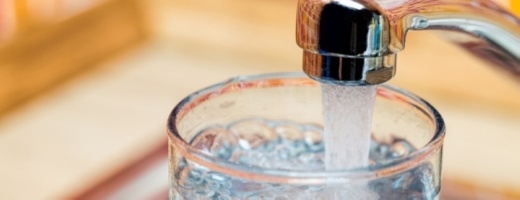After developing a more complete map of water lines within the city, KFA developed ideal standards for water pressures throughout the city and used modeling technology to determine areas that had issues with high pressure, low pressure and fire flows. Projects were ranked according to how much they deviated from the desired standard set by KFA in its analysis with projects further from desired pressure levels ranking higher. Prices for the projects are not definitive and only represent a high-level cost estimate from the planning side of the project, KFA associate Greg Blackburn said. These estimates include construction and engineering services, such as a topographic survey and design work. These projects can be broken up a number of different ways and packaged together to make financing more effective, he said.
"There were no projects we identified as critical," Blackburn said. "The city's water system is working fine. There are some lower pressure complaints that we've had and some issues with main breaks, but in general this system is working fairly well, and this system is just to bring us back into our design criteria."
There are two existing pressure planes in Rollingwood, which means there are two areas of the water-delivery system that stay within a specific range of water pressures. The ideal water pressure for a residential home is 50-85 pounds per square inch, the unit used for measuring water pressure. In order to stay within this pressure range, water tanks must be placed a certain number of feet from the ground depending on the elevation of an area. For areas at low elevations, a pressure releasing valve may be used to alleviate pressure buildup and prevent water from being delivered to customers at pressure levels that are too high. In addition to water pressure for homes, these projects took a look at fire flow pressures, which provide water in times of an emergency.
Project A is the most expensive on the list at $887,000 and includes improvements to the water system on Vance Lane and Vale Street. These improvements are necessary due to repeated breaks in the main line, which was not installed properly. Additionally, the PVC material of the pipes no longer meets industry standards for the amount of pressure going through the pipes, and the pipes are 4 inches wide rather than 6 inches, which is used in surrounding water lines.
Project C is the third and least expensive project on the list at $50,000. This project creates a third pressure plane for mid-level elevations and will resolve low-pressure issues in the northern part of the city by moving Ashworth Drive into the high-pressure plane, but it remains a temporary solution to the longtime problem created by water lines on Vance and Vale, Blackburn said.
"[Project] C is important, and it buys you time, but it doesn't mean that there's not still a problem that needs to be addressed with [Project] A, which costs a lot more," interim Mayor Gavin Massingill said. "Historically, Rollingwood has always gone for the C and then never gotten back to the A. That's what I think we need to be careful not to do."
Project B will connect two existing 8-inch pipes on Timberline Drive and Inwood Cove to create more "loops" in the system, which assist in maintaining water flows in the event of a main line break or fire flow emergency by providing alternative routes for water travel. Projects D-I are a combination of looping throughout the city and upsizing pipes to increase fire flow availability throughout the system, Blackburn said.
Many existing water lines are located on private property in back yard easements, which makes it difficult for public works to read meters and access them in the event of an emergency. Project J would move meters from residents' back yards to their front yards, which is an expensive process that involves redoing pipes and portions of road. The project would also address redundancy in piping and the abandonment of the Hatley and Nixon drives pressure release valve, which would become unnecessary if the third plane in Project C is created. Project K would create a new pressure-release valve to relieve reports of high pressure in commercial areas; however, it is unclear if this project is necessary, and the issue will continue to be investigated, Blackburn said.
All water in the city of Rollingwood is supplied through a contract with the city of Austin. Water is pumped from Lake Austin to the Ullrich Water Treatment Plant north of Rollingwood and is delivered through Austin's water distribution system, which includes three water meters. Austin currently holds a contract with the Lower Colorado River Authority to provide water to Rollingwood, but this is anticipated to change by 2040 because Rollingwood would like to have its own raw water contract, KFA Vice President Dale Murphy said.
Proposed projects cost estimate
A: Vance Lane and Vale Street water improvements—$887,000
B: Inwood Cove interconnect—$105,000
C: Hatley Drive and Almarion Drive pressure plane adjustment—$50,000
D: Pickwick Lane fire flow improvements—$855,000
E: Bettis Boulevard fire flow improvements—$189,000
F: Park Hill Drive fire flow improvements—$279,000
G: Laura Lane fire flow improvements—$779,000
H: Gentry Drive fire flow improvements $232,000
I: Cul-de-sac fire flow improvements—$1,751,000
J: Abandonment projects—$964,000
K: Town Centre pressure release valve—$133,000
Total cost: $6,224,000





